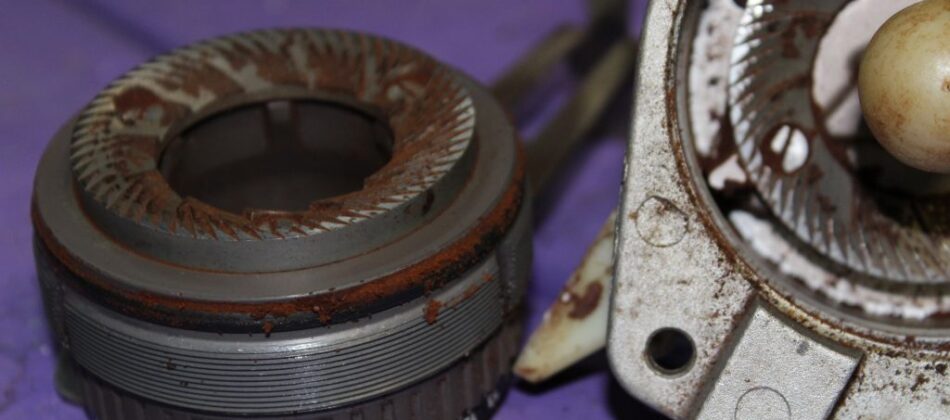
Your typical home burr grinder is going to feature conical burrs. You won’t find any flat burrs in the running unless you’re looking to spend close to a thousand dollars — at least for now. There’s no need to worry though — both burr types produce coffee grounds worth brewing and celebrating.
The times are changing, however, and I’m sure flat burrs will begin appearing in less-expensive devices over the next few years.
If you want to get a leg-up on understanding how the two burr types function differently and why you may want to choose one over the other (if you ever get the chance), read on.
Fair warning though: it’s about to get technical.
CONICAL BURRS — THE INDUSTRY STANDARD
If you pop open your tiny hand grinder, a larger electric grinder, or a higher-end batch retail grinder you would find at a grocery store, you’re going to find conical burrs.
Read: Manual VS Electric Coffee Grinders: How To Pick The Right One
This burr type uses an outer serrated burr and a cone-shaped (that’s what conical means) center burr. As the center burr spins, the sharp edges pull whole beans into the grinding area, where they are broken down into smaller and smaller pieces.
The shape of the burrs allows for fairly uniform grinding with a high level of grind size control. It also is a very efficient shape that allows for a lower-rpm grinder, which results in less noise and heat. Overall, conical burrs are not very expensive to manufacture.
Here’s where it get tricky and the debate begins.
Conical burrs produce a bimodal distribution of coffee grounds. This means that if you were to take coffee ground by conical burrs and place it under a microscope, there would be two distinct sets of particle sizes: small and large.
This holds true at all grind size settings — it will always happen with this burr type.
These two sets of particle sizes are what the world is used to and have played a massive role in developing espresso over the last century, in good and bad ways.
The smaller set of grounds (fines or micro-grounds) restricts the flow of water in an espresso basket, which allows the larger grounds more time to extract and produces a heavy, sometimes silky, body. By the time the larger grounds have experienced a balanced extraction, the smaller ones have over-extracted and contributed bitterness to the final cup.
Post written by GARRETT ODEN | JavePresse.com Here is the original post: https://www.javapresse.com/blogs/grinding-coffee/conical-vs-flat-burrs
